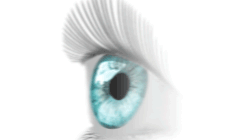
Studies show that about 40% of Americans admit to not telling the truth daily, but there is a good chance that some who claim to be completely honest are lying, so it is likely higher than that! Given the high demand we have seen for a polygraph in Knoxville, this is the case. It has been suggested that 54% of lies can be spotted if you know the common signs to look out for. However, since most people need to be educated on detecting these falsehoods, about 82% of lies will never be found. That's why an increasing number of people rely on a polygraph in Knoxville to get the answers they need in various situations, including everything from cheating spouses and family drama to uncovering criminal activity and other wrongdoing.
Let's look at some of the most common indications that someone is lying to you.
1 - Change in Speech Patterns
One of the most common signs of a liar is irregular speech patterns. When lying, it is very common for someone's voice and mannerisms to change. For example, they may use a higher pitch when telling a lie. However, there has been some fascinating research into how cultural bias impacts this indicator of untruthfulness. According to Dr. David Matsumoto, a San Francisco State University professor, individuals from different cultures may exhibit different vocal tones when lying. For example, Chinese participants spoke in a higher pitch when telling a lie, while Hispanic participants would lower their vocal tone. This means it is crucial to base your observations on changes to the individual's usual speech patterns rather than preconceptions of what happens when someone lies. If your suspicions are raised, the best way to get a straight answer is to use a polygraph in Knoxville to get to the truth.
2 - Non-Congruent Gestures
Have you ever noticed that the gestures someone makes do not match the words coming out of their mouth? For example, has someone said 'yes' while shaking their head to indicate 'no'? This is known as a non-congruent gesture, and it is usually the subconscious gesture that is the better indication of truth.
3 - Not Saying Enough or Saying Too Much!
Something that is often noticed when someone is lying is that they either say very little or over-embellish their answers with too much detail! In an interrogation setting, if a witness is asked, 'do you remember anything else?' an honest person will likely reveal a few more details to support their previous statements. However, if they are lying, they are unlikely to offer anything beyond the story they had prepared. The American Psychological Association calls this lying deceiving by omission.
Not all liars will exhibit this type of behavior. At the other end of the scale, you have those who will offer far too much information in an attempt to seem more credible. One common hallmark of this is giving excessive detail in their descriptions of the discussed situation.
4 - Physiological Indicators
Not all of the indicators of lying are things that you can visibly or audibly detect. The body also goes through some physiological changes when telling a lie, and these are the things monitored by polygraph in Knoxville during an examination. These physiological changes include stress indicators such as breathing rate, perspiration, increased blood pressure, and pulse rate. During a polygraph exam, equipment is used to take a baseline reading of these physiological features and then compare the changes that occur as the subject responds to the questions they are asked. Computerized recording equipment is used to collate these results and make a decision about whether or not the individual is lying.
Some Misconceptions About Lying
One of the big things we experience when providing polygraph in Knoxville is that you can see in someone's eyes if they are lying. The reality is that you probably can't! There is a cultural expectation in the United States that you are not being truthful if you cannot make eye contact. However, there are many reasons someone might not be able to meet your eye, including medical reasons such as anxiety or autism. Like the vocal tones, there is also a cultural difference, with some cultures believing too much eye contact suggests dubious behavior! In 2012, a study published by Plos debunked the idea that our eyes dart from left to right when lying! A further study by the University of Michigan showed that when filming 120 individuals, 70% of them could lie while maintaining direct eye contact.
Uncover the truth!
--
Ken Shull served as a Special Agent with the FBI for almost 25 years and was head of the FBI Polygraph program until his retirement in 2001. At that time he set up the Kendall Investigations practice as a private investigator in Knoxville, TN offering Polygraph services, private investigations, and security guards. Ken is a member of the American Polygraph Association and The American Association of Police Polygraphists.
The Truth is Still the Truth Even if No One Believes it, A Lie is Still a Lie Even if Everyone Believes it.
